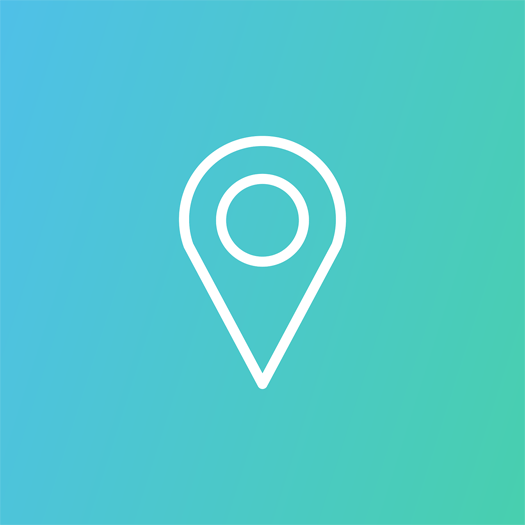The Race for the Local Web

There has never been a better time to be a local business.
Proximity is influencing the digital landscape more so than ever before as shoppers want access to products and services as quickly as possible. Whether it's choosing the closest brick-and-mortar or the fastest delivery/pick-up option for a product they found online, Internet users are proving speed and convenience rule the digital day.
Search queries on Google including the words "near me," for example, have increased by a factor of 34 since 2011 and, according to the search engine, nearly doubled since last year - with the vast majority (80 percent) coming from mobile. Which search entries do mobile users tend to select the most? Those that can lead to quick action. In fact, Google reported last year that 72 percent of consumers who searched for local information on their smartphones visited a store within 5 miles - good news for a business with a local storefront.
Clearly mobile and the local Web are deeply intertwined (more on that below), but it's not just mobile search that is fueling local purchase decisions.
Omnichannel - strategies that are used to provide a seamless brand experience regardless of which device or channel is being used by the consumer - is dramatically changing how consumers (both in business to consumer and business to business) expect to conduct business and make transactions online and offline.
Two key omnichannel practices in ecommerce, for instance, are the ability to view in-store inventory online and the ability to buy online and pick up in-store. Little do shoppers know, however, about the complexity and expense involved in these capabilities (nor do they care). In an Accenture and Hybris paper released last year, the two companies found that 71 percent of shoppers expect to view in-store inventory online, while 50 percent expect to buy online and pick up in-store.
Much of this behavior is even happening at brick-and-mortars, with the Local Search Association (LSA) reporting just this year that 90 percent of mobile users have used their devices while shopping - typically looking for deals and comparing prices (referred to as showrooming).
The savviest of companies are using these customer habits to their advantage by catering to the mobile user in unique ways.
It should be obvious to both consumers and 'Net workers that the lines between the online and offline worlds are intersecting, causing the local Web to be more complex, yet more rewarding than ever. From the smallest of companies to the largest of enterprise brands, every business is a local business racing to win the hearts and dollars of customers looking to do business conveniently.
STARTING LINE
Despite the opportunities, there is a lot involved when it comes to developing (and maintaining) a local Web presence. For many, their efforts start and end on the search engines - a primary driver of customer acquisition for today's businesses. As mentioned, Google data indicates that consumers search with location and proximity in mind, with 4 in 5 consumers using search engines to find location information like store addresses, business hours, product availability and directions (on both mobile and desktop devices). While this information certainly needs to be displayed accurately and strategically on a brand's website (see, "Location, Location, Location" sidebar), there are times when users will simply never go further than the search engine result pages (SERPs) - requiring companies to leverage options that help them win conversions on the SERPs, without as much as a website visit (see this month's Mastering Search column for more ideas on how to do so). This is why savvy local companies have long used location-based ads to engage users.
Google's research on the subject found that 60 percent of consumers have used location information in ads, specifically indicating their preference for ads containing store addresses and phone numbers, as well as call buttons. For many, however, this is old news. Ad extensions have been a part of their paid search strategies for quite some time, using sitelink (driving consumers far into a site), call, review and location extensions to get above the search results and entice users to click by adding extra information about their businesses.
For multi-location companies, however, connecting prospective customers with a company's nearest location can prove to be more difficult, as was the case with Cottman Transmission and Total Auto Care with its 63 units nationwide. Through hyperlocal PPC and SEO marketing strategies and supporting tools, however, Cottman is now able to match searcher intent to the right Cottman location and service, according to the company's VP of Digital Marketing Derik Beck.
"Each location runs independent marketing campaigns, all managed through corporate partnerships, so the local strategies are implemented and executed," said Beck. "Whether a searcher is looking for 'Transmission Repair' or needs 'Transmission Repair in Denver,' we are able to present the correct ad copy, the correct campaign and the correct landing page to that individual."
Reporting for multi-location paid search campaigns can be a digital nightmare though - just ask Starwood Hotels with its 10 brands, including Westin, Sheraton and St. Regis.
Its interactive agency Razorfish found a way to reduce time spent on reporting, however, by leveraging Marin Software. The Marin Software case study indicated that Starwood bids on approximately 100,000 different keywords across its range of hotels and that around 90 percent of all Starwood's search terms are branded, but its business model demands it bids on broader, local terms such as "luxury London hotel" or "place to stay in London." By leveraging Marin Software, Razorfish reduced time spent on reporting for Starwood Hotels by more than 80 percent, allowing the agency to focus on other areas.
LOCAL SCALABILITY
Setting up, managing and optimizing local marketing campaigns is challenging, especially for advertisers with many store locations. In addition to reducing reporting time, Marin Software's automation tools enable marketers to efficiently scale local marketing efforts by generating a set of keywords based on a few key inputs such as industry, business and location.
The benefits of localizing a paid search campaign (on any ad-driven search engine), for example, are to save on budget and to make sure ads only show to a target audience in a specific location, according to Fernando Angulo, head of international partnerships at SEMrush.
In the case of paid search, a large audience isn't a plus. Local companies - from single locations to multiple locations - can leverage SEMrush to analyze both their site and their online advertising activities in order to output a list of domains currently competing with theirs in paid advertising.
"One of the strongest features of our service is the ability to perform keyword research," said Angulo. "With paid or organic search, it becomes easier to find related or exact-match keywords you can use for your campaign. But I think the most useful report is the Ad Copies report. It displays a list of chosen competitors' websites' AdWords ad copies shown exactly as they appear in search results. What's more, you can also use the Ad History report to further analyze how your competitors have changed their ads to make them more relevant for their audience."
After reviewing the analysis conducted by these tools, brands will not only get a list of ad copy with the highest positions, buy they'll also know which keywords their competitors are using for ad campaigns - helping them develop and improve their own initiatives.
Here's a list of solutions to discover the right local keywords.
MULTIPLE RACES
In the same way that multi-location companies bid for location-based keywords, brands with several locations must "act small" creating location-specific websites and landing pages to attract consumers looking for their closest brick-and-mortar. The latter, according to Adam Dorfman, SVP of product and technology for SIM Partners, has long been a recommendation from Google, preferring any business with multiple locations to have unique and useful location pages associated with each.
What Google desn't say, and what SIM Partners has found, however, is that it's not enough to have a location page with a map and name, address and phone number (NAP) data. Rather, having hyperlocalized content on these pages is extremely important and can have a significant impact on search engine optimization (SEO) and conversion.
For example, HardRock.com hosts location pages for its many operations. Not only des www.hardrock.com/cafes/san-diego have hours of operations and an interactive map, but it also displays special promotions, events and social media content for that specific location. Further, including fresh social media content des not require much of Hard Rock's time, as users upload their pics directly to the site and its social media service Olapic pulls users' Hard Rock photos from networks like Twitter and Instagram.
For large, multi-location retailers being able to push down this kind of localized information at scale can be difficult. SIM Partners offers its Velocity platform, providing a way for brands with multiple locations to have a centralized place to store, manage and publish data. Here are some key features of the Velocity platform:
++Reports and publishes local data (think name, address, etc.) across the Web, updating clients' information on a nightly basis on Google, Yahoo, Bing, Foursquare and other online directories to ensure searchers with local intent find accurate business information.
++Creates custom location pages that integrate location content with brand-specific items such as logos, colors and messages (so there is consistency across brand location pages).
++An extension of the Velocity platform, Velocity Social helps large brands effectively manage social communities for multiple locations (see sidebar).
++Assigns call tracking numbers to each individual location, so when a consumer "clicks to call" brands can track offline conversions, listen to the calls and see other call analytics.
++Helps manage localized promotions, such as automating coupons for Los Angeles customers and different ones for Illinois customers - good for seasonal sales.
These capabilities have been taken up a digital notch, however, with SIM Partners' recent alliance with Vibe, a mobile marketing company. The partnership will allow SIM Partners to take the Velocity platform and engage consumers in the "near-me" "moments on mobile devices. For example, once searchers click on a fast food restaurant's location page, they can opt in to receive promotions on their mobile devices (stored in mobile wallets like Google Wallet or Apple Wallet). The coupon can be triggered when the mobile device owner is driving by that location (using GPS detection), a certain point in the day or even when a customer is at a more specific location within the business (using iBeacons).
"We're thrilled to be partnering with SIM Partners and bringing together two extremely effective marketing tools - location and mobile wallet technology," said Jack Philbin, co-founder and CEO of Vibes. "SIM Partners is just one example of how Vibes' mobile wallet APIs can give technology companies seamless and instant access to the leading mobile wallet applications in Apple Wallet and Google Wallet. We are seeing in-store redemption rates of 30 percent once offers are saved to Apple Wallet and Google Wallet, so partnering with SIM Partners' location marketing platform is a natural and smart fit for both of us and our customers."
From both a marketer and technologist's standpoint, location-driven mobile notifications are a digital dream - brands get unparalleled access to consumers not only on their phones (which are typically on-person or within arm's reach) but also wherever they are.
Just how willing are consumers when it comes to giving up anonymity for a discount? Well, that might depend on the device they are using.
There are two things happening right now in the world of mobile notifications, according to Dorfman of SIM Partners. One, mobile users are learning how to turn down/turn off app notifications, which makes them more willing to accept them. Two, the onset of wearables has made notifications less intrusive.
"With wearables like Apple Watch, you don't have to reach into your pocket and wonder if it's a text or an app notification, you just glance at the notifications on your watch," said Dorfman. "Then you can decide [when you're out and about, for example] to make a left turn instead of a right to redeem a free coupon [at a local business]."
PAYMENT PLATEAU
Apple may not only be changing consumers' attitudes toward mobile notifications, but also their willingness to use mobile payment options in general. In fact, Walker Sands' 2015 "Future of Retail Study" found that only 4 percent of consumers have used Apple Pay - that gives users the ability to pay with their devices rather than their physical credit cards - but 18 percent say its introduction makes them more likely to make a purchase with their smartphones in the future.
What is it about Apple Pay that makes consumers more open to using a mobile payment system?
"Apple already had a great brand reputation and amazing consumer penetration, so Apple Pay quickly turned into a trusted and widely accepted mobile payment solution," said Dave Parro, retail practice lead at Walker Sands. "This established confidence in the brand helps ease consumers' apprehensions of using mobile payment providers (8 out of 10 consumers report some hesitancy about using mobile payment services), with the biggest concerns being security (57 percent) and privacy (48 percent), according to [our recent future of retail study]."
Consumers' security and privacy concerns are likely why 56 percent of them (according to the previously mentioned report) view cash as the most secure form of payment, ahead of credit cards (22 percent) and debit cards (16 percent) with mobile wallet/phone applications named by only 1 percent of consumers.
Even with Apple's name recognition, it will still have a significant hurdle to overcome for widespread adoption. In the tech savvy crowd, however, adoption might rise quicker than most expect. The reason is that according to Q1 2015 data from DeviceAtlas, iPhone 5 (both S and C versions) is currently the most popular model out of the latest Apple iPhones. iPhones - like iPhone 5s that do not support Apple Pay without Apple Watch - will eventually be upgraded and it appears merchants will be ready. According to Kount, 68 percent of merchants will accept mobile payments by year's end.
For further reading, check out, "Should Your Company Transition to Mobile Payments."
PICK-ME-UPS
As customers become even more reliant on their smartphones for search, promotions and even payments, the expectation that they can access a global brand at a hyper-local level will grow to be even more cumbersome for enterprises. This is because customers will begin to think even less about channels and expect the same level of service and inventory in-store and online.
Brands are doing what they can to not only offer buy online and pick up in-store options and the ability to view in-store inventory online, but also offer same-day delivery. For the latter, services like Deliv are popping up to offer same-day delivery in existing checkout processes, whether online, mobile, phone or in-store. Customers can choose when and where their purchases are delivered. In this case, services like UPS and FedEx are replaced with drivers who, using their own vehicles, are rated by the end-user and then assigned deliveries based on their ratings. If it sounds familiar, that's because it's very similar to Uber, which disrupted the taxi industry by providing a better user experience.
Personal delivery drivers cannot be a fulfillment possibility for brands, however, without seamless communication between their on- and offline channels. Fortunately, vendors are also competing to win the local Web. This competition among technology providers is a good thing, even for smaller local businesses.
"Large retailers are setting the stage and have been influencing shoppers' expectations for some time," said Shopatron Founder and CEO Ed Stevens. "This includes an expectation to access local product availability online with the option of same-day in-store pickup."
How do brands and smaller retailers compete?
"Shopatron's new technology in Local Product Search levels the playing field, allowing brands and retailers of all sizes to provide shoppers a complete view of local product availability on the first day they launch their product locators. This is the only technology that can find products at local retailers with or without store inventory feeds. Brands and retailers can now meet and exceed shoppers' expectations by offering local, same-day in-store pickup."
Mid-level enterprises also have a racing partner in NetSuite, which recently launched its SuiteCommerce InStore solution, a mobile-first, point-of-sale offering that gives in-store associates access to online data and vice versa, websites access to in-store information and customer history. As NetSuite CEO Zach Nelson described it at the company's recent SuiteWorld conference, "This isn't coupled with the website, it is the website in-store."
For instance, an online shopper visits a retail website and abandons his shopping cart that contains a plaid shirt and a camping chair. That shopper can see where his items are in-stock locally. He then visits the store, and the associate helps him, seeing his online shopping cart, his average transaction total, orders and even returns.
Knowing this information, a sales associate can better personalize his in-store shopping experience and even offer more relevant upsell suggestions based on previous sales. What's more, using SuiteCommerce InStore, the sales associate can complete the transaction for the plaid shirt but then simultaneously offer to ship him the camping chair that he chose not to purchase because he didn't want to carry it around the mall.
Using SuiteCommerce InStore, NetSuite customers can benefit from having their website data in-store, which can provide a more seamless and memorable buying process for local customers and more conversions for the business.
THE FINISH LINE
The local Web is just one example of how everything that consumers touch - mobile, search, social, payments, promotions, deliveries - is influenced by the other.
As brands race to win the local Web, it's a good reminder to think about outside influencers because winning local hearts and dollars is a team effort.









